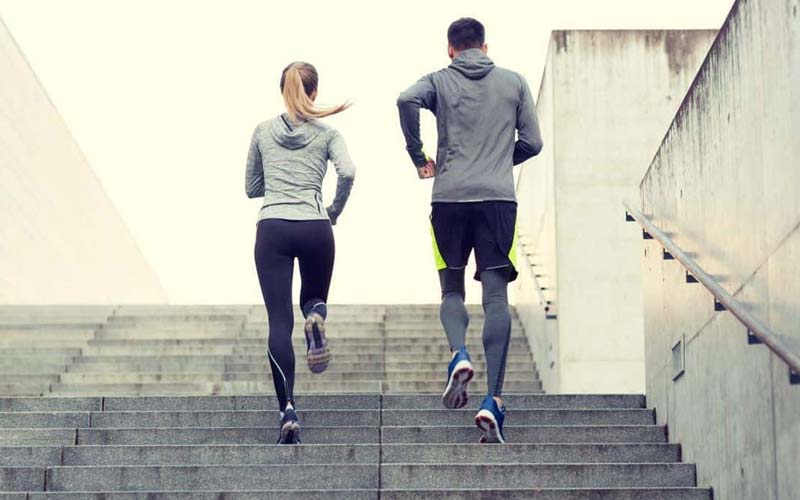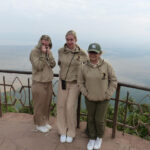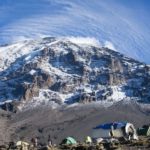Kilimanjaro Summit Preparation
Ensuring you’re in peak physical condition before embarking on the climb up Mount Kilimanjaro is paramount for an enjoyable experience. Conquering Africa’s tallest summit is no small task, and adequate preparation is key. Given the extensive trekking involved, preparing your body for the demands of the journey is crucial. Maintaining optimal energy levels, particularly as you approach the summit, is essential for a successful Kilimanjaro hike.
So, here’s a comprehensive guide outlining 10 essential steps to ensure you’re fully prepared to conquer the Kilimanjaro Summit:
1. Train Right
What’s the Optimal Training Approach?
Many individuals seek quick workout solutions that fit into their busy schedules, often opting for short sessions at the gym, treadmill runs, or track workouts. However, when it comes to building endurance for climbing Mount Kilimanjaro, the most effective training method involves low-intensity exercises performed over extended durations.
Consider incorporating day hikes into your training regimen, spending several hours outdoors to acclimate yourself to prolonged periods on your feet. This approach not only enhances physical stamina but also familiarizes you with the endurance required for the climb.
2. Use Light Shoes
One pound on your feet equals five pounds on your back,” a well-known adage among climbers. With this in mind, prioritize lightweight footwear to alleviate unnecessary strain. Research suggests that for every pound on your feet, the energy expenditure during a Kilimanjaro hike can be amplified by a staggering 4.7 to 6.4 times compared to carrying the same weight in your backpack. Choose lighter shoes to reduce fatigue and enhance your overall trekking efficiency.
3. Carry less Gear
One common pitfall for hikers is the tendency to overpack, carrying more gear than necessary. Fortunately, on Kilimanjaro, porters handle the task of transporting your equipment between campsites. This means you only need to carry essential items needed between stops, such as water, snacks, extra clothing, and accessories. Take the time to carefully assess your packing list and eliminate any excess gear that could weigh you down unnecessarily. Streamlining your load will not only lighten your burden but also enhance your comfort and mobility during the trek.
4. Set A Comfortable Pace
Maintaining a sustainable pace is essential for reaching your Kilimanjaro summit successfully. Begin by easing into your hike to allow your body to acclimate and warm up gradually. Avoid the temptation to start and stop frequently, as this disrupts your momentum and strains your cardiovascular system.
Each time you pause, your heart rate decreases, only to spike again upon resuming. By maintaining a steady, sustainable pace, you can keep your heart rate within the optimal aerobic zone throughout the climb.
With continued time on the trails, you’ll find it easier to establish and maintain this sustainable hiking pace. Embrace the process, as it not only conserves energy but also enhances your overall endurance and enjoyment of the journey.
5. Use Trekking Poles
Trekking poles are invaluable tools that significantly enhance your efficiency as a hiker. When covering long distances, the strain on your body, particularly your lower body, can be considerable.
However, trekking poles alleviate this strain by redistributing the workload to your arms. This not only reduces fatigue but also provides additional stability and support, particularly on challenging terrain.
During uphill sections, trekking poles help propel your body upward, effectively engaging your upper body muscles and providing leverage for ascent. Conversely, on downhill stretches, the poles serve to mitigate impact on your knees, ankles, and feet, absorbing shock and minimizing strain on these vulnerable joints.
Incorporating trekking poles into your hike not only improves your overall efficiency but also enhances comfort and reduces the risk of injury, allowing you to tackle Kilimanjaro’s terrain with greater confidence and ease.
6. Hydrate Accordingly
Water, constituting a staggering 70% of our body mass, is indispensable for our body’s metabolic functions. Its role in maintaining optimal health and performance cannot be overstated.
When we hydrate adequately by drinking water, the benefits are profound. The heart operates more efficiently, ensuring optimal blood circulation throughout the body. This improved circulation not only supports vital organ function but also enhances overall cardiovascular health.
Furthermore, proper hydration is essential for muscle function. By replenishing fluids lost through perspiration during physical activity, water helps muscles work at their peak capacity. This not only boosts performance but also aids in post-exercise recovery, reducing the risk of fatigue and cramping.
In essence, ensuring sufficient hydration is fundamental for overall well-being and vitality. By prioritizing hydration, you enable your body to function optimally, promoting better health, performance, and recovery. So, remember to drink up to support your body’s needs and thrive during your Kilimanjaro adventure.
7. Eat The Right Foods
During your Kilimanjaro trek, your body expends considerable energy, making it essential to refuel with nourishing food. Opting for a high-carb diet is particularly efficient while climbing Mount Kilimanjaro. Carbohydrates provide a readily available source of energy, enabling your body to fuel its demands more rapidly compared to fat or protein.
To sustain your energy levels throughout the climb, it’s crucial to ensure you’re consuming an adequate amount of food. Despite potential altitude-induced symptoms such as bloating and decreased appetite, make a concerted effort to ingest sufficient calories and avoid skipping meals.
By prioritizing a high-carb diet and maintaining regular eating habits, you’ll provide your body with the fuel it needs to conquer Kilimanjaro’s challenging terrain and altitude. So, remember to fuel up and keep your energy levels soaring during your ascent.
8. Focus On The Positives
Scaling a high-altitude peak presents both physical and mental hurdles, often giving rise to negative thoughts and doubts.
To combat these challenges, it’s essential to adopt a positive mindset and redirect your focus towards the aspects that are going well. Express gratitude for favorable conditions, such as mild weather and adequate gear, and acknowledge the progress you’ve made thus far.
Harness the power of optimism to boost your morale and energize your spirit. Remind yourself of your strength and resilience, drawing motivation from within to persevere through adversity.
By cultivating a positive outlook and embracing optimism, you’ll empower yourself to overcome obstacles and conquer the mental and physical challenges of ascending Mount Kilimanjaro. So, keep your spirits high and let positivity propel you towards the summit.
9. Use The Rest Step
Utilizing the rest step technique offers a brief respite between each stride, allowing you to recuperate momentarily during your Kilimanjaro trek. This involves taking deliberate, unhurried steps and pausing when your legs begin to feel fatigued.
By incorporating the rest step into your hiking routine, you conserve energy reserves, thereby bolstering your overall endurance. This strategic approach not only prevents premature exhaustion but also enables you to maintain a consistent pace over extended periods.
In essence, mastering the rest step is a valuable skill that enhances efficiency and resilience on the trail. By embracing this technique, you’ll optimize your stamina and increase your likelihood of summiting Mount Kilimanjaro successfully. So, remember to integrate the rest step into your hiking strategy and reap the benefits of improved performance and endurance.
10. Trail Run
When it comes to aerobic exercise, few activities rival the effectiveness of running, especially trail running. The dynamic terrain encountered while trail running not only enhances cardiovascular endurance but also offers superior strength training benefits.
Engaging in trail running provides a diverse and intense workout experience, contributing to the development of robust hiking endurance. The varied landscapes and challenging surfaces encountered on trails demand greater effort from your muscles and cardiovascular system, thereby effectively preparing you for the rigors of climbing Kilimanjaro.
It’s worth noting that climbing Africa’s tallest peak is a feat achievable by most individuals, regardless of age or physical condition. The key to success lies in ensuring your cardiovascular fitness is top-notch, and incorporating activities like trail running into your training regimen can greatly contribute to this goal. So, lace up your shoes, hit the trails, and prepare to conquer Kilimanjaro with confidence.
Preparing for a Mount Kilimanjaro climb demands a significant time commitment, often stretching months before your departure date and long before you start packing your bags. Consider the Kilimanjaro summit preparation above.














